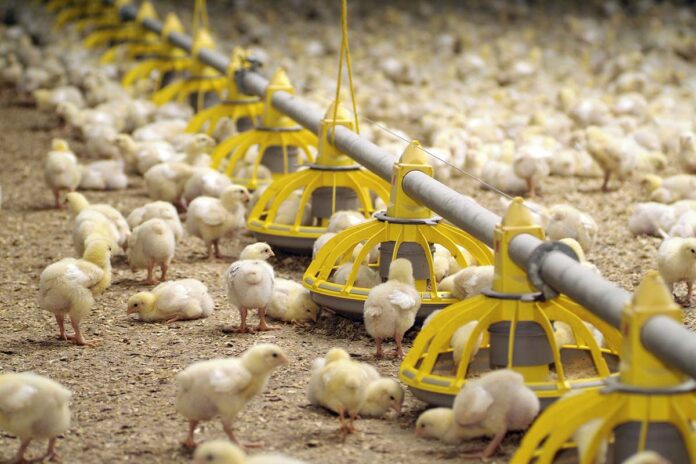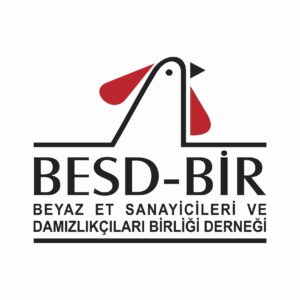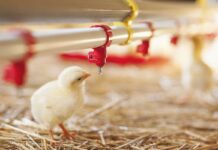
Gut health which is characterized by intestinal integrity, intestinal microflora, mucin and enterocyte functionality, may be of greatest concern among poultry producers because it has a great influence on the growth performance and welfare of poultry, as it affects feed digestion, nutrient absorption, protein and energy utilization, immunity and disease resistance.
A critical period in the lifespan of the broiler is the first week post hatch (starter period) were chicks are commonly fasted for the first 36 to 72 h post hatch (because of the logistics of commercial production), their digestive tract is not fully developed with low ability to digest, absorb and assimilate nutrients. Moreover, their intestinal microbial community is not established yet and enables the colonization of the photogenic bacteria.
The current presentation describes several nutritional manipulations which promote the intestinal development and influence intestinal microflora and gut integrity.
Introduction
The immediate post hatch developmental period represents a significant phase in attaining quality broiler performance at marketing. An efficient transition period from late term embryo to a viable independent chick is necessary for achieving results. Post hatch birds must develop intensively their intestinal ability to digest and absorb, to make a shift from egg and embryonic nutrients to exogenous feed and to establish the “right” microflora. Under practical conditions many birds have access to feed only 36-72 h after moment of hatch and during this time body weight decreases, intestine and muscle development is retarded. Moreover, as the modern broiler lines are intensively selected for a higher growth rate and increased pectoral muscles, there is an enhanced requirement of chicken embryos for energy and protein. Accordingly, some of the challenges faced by broilers chicks include weakness, reduced feed intake, impaired growth, susceptibility to disease, and mortality. These symptoms may be due to immature digestive system unable to reload depleted energy reserves from consumed feed, to limitations in some nutrients in the first day’s post hatch and to luck of beneficial bacteria which promote the development of the intestine.
Maintaining gut integrity and health and efficient growth performance in poultry is a priority. A stable enteric ecosystem, particularly in the hind gut of poultry, is essential as symbiotic microflora competitively excludes the adverse effects of more pathogenic species. Establishment of stable ecosystem depends on uncompromised early intestinal development, gut motility conditioning by the structural properties of feed and strategic use of organic acids, essential oils, prebiotics, probiotics, and enzymes.
Intestinal development
The transition from embryo to independent chick is mediated by processes that occur during the critical period of a few days pre- and post-hatch. During this period, chicks make the metabolic and physiological transition from egg nutrients (i.e. yolk sac and amniotic fluid) to exogenous feed.
Immediately post-hatch, the chick draws from its limited body reserves and undergoes rapid physical and functional development of the GIT in order to digest feed and assimilate nutrients. Therefore, the sooner the GIT achieves its functional capacity, the sooner the young bird can utilize dietary nutrients and efficiently achieve its genetic growth potential, while resisting infectious and metabolic diseases.
An exploration of intestinal development shows that the GIT develops throughout incubation, but the functional abilities of the small intestine only begin to develop 3 days before hatch. Towards the end of incubation, extensive morphological, cellular and molecular changes occur in the intestine. Research in broiler embryos has shown that during the last days of incubation there is a significant increase in the weight of the intestine relative to embryonic weight (1.4% at 17 days of incubation to 3.4% at hatch). Activity and RNA expression of brush-border enzymes, which digest disaccharides (sucrase-isomaltase) and small peptides (aminopeptidase), and of major transporters (sodium-glucose transporter and ATPase), begin to increase a few days before hatch and continue to increase on day of hatch.
In the first two days’ post hatch the small intestinal mucosa appears to be immature and not fully developed. However, later on, from day 3 to day 10, the intestinal mucosa exhibit organization and establishment of the crypt region, a several-fold increase in villus height and area, an increase in the number and polarity of enterocytes and maturation of the goblet cells, which are capable of producing both acidic and neutral mucins.
The immediate post-hatch period seems to be critical for intestinal development. Decreased development was found when chickens were fasted for 36 to 48 h post-hatch. This “fasting” condition is a common situation in the poultry industry. Since chicken embryos have a wide “hatching window”, commercial hatcheries do not remove birds until the maximum number of eggs have hatched; thus, chick age at exit from the hatchery averages more than 1 day. Hatchery treatments such as sexing, vaccination and transport to farms result in an additional time lag before birds receive first access to food and water. Thus, most chicks are fasted for 48 h or more before their first access to feed.
The concept that meanwhile this process the yolk sac can maintain the hatchling, until stable feeding becomes available, is not proper for the current fast growing breeds. It has been shown that 36 to 48 h of fasting immediately post-hatch decreases enterocyte number, crypt size, the number of crypts per villus, crypt proliferation, villus area, rate of enterocyte migration, goblet-cell size and mucin dynamics. This withholding of feed also results in a decrease in growth at an early age and lower body weight (BW) and proportion of breast muscle at marketing.
Modulating the functional development of the chicken intestine
Since access to feed soon after hatch is critical for the development of the intestine and its digestive capacity there is a need to feed the hatchlings as soon as they hatched. A large body of knowledge shows that “feeding” the embryo 3 days before hatch (by in ovo feeding methodology) accelerate enteric development and its capacity to digest nutrients. By injecting an isotonic in ovo feeding (IOF) solution into the embryonic amnion, the embryo can naturally consume supplemental nutrients orally before hatching. In ovo feeding, “jump-start” and stimulate intestinal development to begin earlier than would otherwise occur after.
Microflora in the chicken intestine
Composition of intestinal microflora, definition and characterization of healthy intestinal ecosystem, examples for modifying intestinal microflora by feed and by feed additives and ways for early establishment of microflora to form healthy intestine are hot topics nowadays in poultry production. Traditionally, intestinal health has been largely dependent on prophylactic and therapeutic uses of antibiotics. However, today as a result of customers’ concern about food safety and traceability and due to increasing antibiotic-resistance pathogenic bacteria – there are voluntary or legislated limits on the use of antibacterial feed additives for poultry. Therefore, a change in the methods to maintain good intestinal health is one of the major aims in poultry and veterinary research.
Modulating gut health is possible by several mechanisms. Among them are altering intestinal pH; maintaining protective intestinal mucins; selection for beneficial intestinal organisms or against pathogens; enhancing the fermentation volatile short-chain fatty acids; enhancing nutrient uptake; and increasing the humeral immune response.
Since AGPs mainly targeting the gut microflora population, manipulation of the intestinal microbial flora profile, by other ways, may apply similar health benefits and growth promoting effects as AGPs. Strategic use of different feed additives can be used to stabilize the enteric ecosystem. These enteric conditioning feed additives include probiotics, prebiotic non-starch polysaccharides, essential oils, organic acids and short-chain fatty acids, mananoligosaccharide (MOS) derivatives of yeast cell wall, and microbial enzymes.
Microbes in the gut and intestine may be grouped into either commensal organisms or transient and potential pathogens. The commensals are adapted to the host environment and are often considered beneficial by providing vitamins, amino acids, and short-chain fatty acids to the host: acetate, butyrate, and succinate are commonly produced, with butyrate being the preferred energy source for host epithelial cells. The normal microbiota also militates against pathogens by mechanisms that are not yet fully understood.
Cultivation techniques limit the ability to define the intestinal microbiota. However, molecular techniques based on determining DNA and RNA sequences similarity of selected genes within microbial community are being used successfully to detect and characterized microbiota. Previous studies on culturing methods have been replaced with new metagenomic approaches for defining population biodiversity and their relative abundantly. Using 16s rRNA analysis on chicken GIT, revealed that groups of Clostridiales, Bacteroidaceae, Lactobacillaceae, Enterococcaceae, Porphyromonadaceae, Eubacteriaceae, Ruminococcaceae, Lachnospiraceae, Veillonellaceae and Rikenellaceae were dominant. Analysis in our lab indicated that in young chicks (4 d) the major species presented in the small intestines and ceca was Lactobacilli, with a Bifidobacteria population becoming more dominant in the ceca at older age while Clostridium was detected only in some segments of the small intestine. In older chickens, Salmonella, Campylobacter, and E. coli species were found in the ceca.
This microflora has a role in nutrition, detoxification of certain compounds, growth performance, and protection against pathogenic bacteria. The intestinal microflora lives in close contact with its surrounding intestinal wall (enterocyte epical membrane, mucin, intestinal immunity) as well as with other bacteria that may exert beneficial or harmful effects on the host, depending on whether they are classified as symbiotic or as pathogens. The interaction is determined on one hand by characteristics of the microorganisms (e.g. type of microorganism), and on the other hand by characteristics of the intestinal wall (e.g. level of intestinal immunity). Together they determine the health status of the intestine. A healthy gut is one that has a stable and diverse microbial ecosystem. The criteria for desirable microflora is not high or low presence of specific microbial species but a bacterial community which have a significant influence on animal performance.
Modulating the intestinal microflora and intestinal integrity by feed and feed additives
Diet formulation and feed form affect the colonization of enteric pathogens. Structural properties of the feed that stimulate gizzard motility has been demonstrated to promote reverse peristalsis, thereby improving the foregut digestion of proteins, fat, and starches leaving little for competitive microbiota to prosper. In contrast, viscous non-starch polysaccharides that impede reverse peristalsis and digestion of protein, fat, and starches in the foregut of poultry will cause the competitive microbiota (pathogens) to grow.
Essential oils have been recognized for their anti-microbial activity, and they have gained much attention for their potential as alternatives to antibiotics. Lee and Ahn (1998) found that cinnamaldehyde, derived from the cinnamon essential oil, strongly inhibits Clostridium perfringens and Bacteroides fragilis in vitro, and moderately inhibits Bifidobacterium longum and Lactobacillus acidophilus. Also, a wide range of in-vitro anti-microbial activities of essential oils derived from cinnamon, thyme and oregano were presented during the last 10 years. The exact anti-microbial mechanism of essential oils is poorly understood; it may be associated with their lipophilic property and chemical structure. To be as effective as growth promoters, these herbal antimicrobial compounds must be supplemented to the feed in a more concentrated form than found in their natural state, which will increase usage costs.
Prebiotics are non-digestible food ingredients, which beneficially affect the host by selectively stimulating the growth of one or limited number health-promoting bacteria in the GIT. Prebiotic selectively utilized by endogenous microbial population groups such as bifidobacteria and lactobacilli leads to changes, both in the composition and/or activity in the GIT microflora confering benefits upon host well-being and health. Moreover indirectly, prebiotic treatment may have immunomodulatory effects by enhanced the IgM and IgG antibody titers in plasma. These findings emphasize the multisystem involved by bacteria gut modulation. Prebiotics refers groups are: trans-galacto-oligosaccharide, fructo-oligosaccharide (FOS), Xylo-oligosacchrides, Mannan-Oligosaccharides (MOS), inulin and lactulose.
MOS: During the past years, poultry feed industry has proceeded to non-pharmaceutical alternative additive, mannan-oligosaccharide, which constructs the yeast cell wall. Comprehensive data-pulling from 1993 to 2003 of bird feed with Bio-MOS (Alltech Inc. from the yeast Saccharomyces cerevisiae) indicated that MOS reduced mortality in bird as much as antibiotics. Since MOS have high affinity to ligands, it is acting as lectin, offering a competitive binding site rather than intestinal epithelial cells for bacteria attachment. Several studies have demonstrated the benefits of adding MOS to broiler diets, improved gut morphology in features such as villus length and villus area, growth performance characteristics such as body weight, feed-conversion rate and apparent metabolized energy. Adding MOS to the poultry diet also exhibited beneficial changes in intestine and performance, in mucin secretion and in goblet cell number per villus, in digestibility and brush-border enzyme activity and in gut immune responses. Furthermore, MOS has been shown to alter the gut microflora by reducing the number of pathogenic bacteria that colonize the GIT. Work to study MOS’s molecular interaction on broilers intestinal transcriptome was investigated by Affymetrix microarrays. Results indicated that cell energy production, death, and protein translation were altered. Further pathway analysis indicated up-regulation of oxidative phosphorylation, cellular stress response, and immune processes cycles.
Fiber-degrading enzymes supplementation has become a standard practice in the poultry industry, largely driving by the rising feed ingredient costs. Supplemental enzymes in the feed are used to achieve the following aims: alleviate the adverse effects of anti-nutritional factors (such as arabinoxylans, β-glucans); extract certain nutrients more available for absorption and enhance the energy value of feed ingredients and also modulate intestinal microflora to a healthier state.
Probiotics: Probiotic microorganisms increase the colonization of commensal bacteria at the lower intestinal tract and inhibit growth of potentially pathogenic microorganisms by competitive exclusion. Competitive exclusion of commensal microflora against pathogens include: 1) lowering the pH through production of lactate, lactic acid and short-chain fatty acids (SCFA); 2) competing for gut lining attachment and available nutrients; 3) producing bacteriocins; 4) stimulating the gut associated immune system through cell wall components; and 5) increasing the production of SCFA, which have bacteriostatic and bactericidal properties and stimulate intraepithelial lymphocytes, and natural killer cells. Thus, probiotics have been shown to improve performance, decrease mortality, and improve FCR of poultry. Most commercial probiotic products are composed of pure defined cultures of one or more micro-organisms. Thus, prebiotic is also known as defined competitive exclusion cultures. Defined competitive exclusion cultures given to broilers have been shown to decrease Salmonella Typhimurium. Also, undefined competitive exclusion products originating from adult intestinal microbiota are usually inoculated to 1-day-old chicks in order to control of Salmonella contamination. Another recent publication states that dietary supplementation with multi-strain probiotics improved broiler growth performance, ileal amino acids digestibility, and humoral immunity. Furthermore, the probiotics decreased the cecal numbers of E. coli and decreased the NH3 content of excrete.
Many recent publications demonstrated the multifunction of probiotic bacteria on GIT epithelium: altering the broiler GIT epithelium morphologic and cell development; stimulate the immune system; influences on tight junction dynamic proteins component and alter mucus secretion.
It should be noticed that probiotics have some disadvantages in comparison to other modulators of enteric microflora as they may have a short shelf-life and sensitivity to excessive heat and pressure during feed processing. Some probiotic microorganisms may be reduced or eliminated by the low pH in the gizzard, and thus have little effect in the lower intestinal tract where pathogens pose problems. If a probiotic is added to the drinking water, the chlorine sanitizer may adversely affect its survivability. Acidification would be a better sanitizer than chlorine when delivering a probiotic via the drinking water. Coating technology has helped with some of these concerns.
Synbiotics: The combinations of prebiotics and probiotics are known as synbiotics. Study showed that supplementation of broiler diets with a prebiotic MOS and a probiotic-mixture significantly increased the body weight gain with slightly improved feed conversion ratios, compared with the unsupplemented control.
Conclusions
Challenges faced by broilers chicks in the starter weeks include weakness, reduced feed intake, impaired growth, susceptibility to disease, and mortality. These symptoms may be due to immature digestive system unable to reload depleted energy reserves from consumed feed, to limitations in some nutrients in the first day’s post hatch and to luck of beneficial bacteria which promote the development of the intestine.
This microflora has a role in nutrition, detoxification of certain compounds, growth performance, and protection against pathogenic bacteria. The intestinal microflora lives in close contact with its surrounding intestinal wall (enterocyte epical membrane, mucin, intestinal immunity) as well as with other bacteria that may exert beneficial or harmful effects on the host, depending on whether they are classified as symbiotic or as pathogens.
Establishment of stable ecosystem depends on uncompromised early intestinal development, gut motility conditioning by the structural properties of feed and strategic use of organic acids, essential oils, prebiotics, probiotics, and enzymes.
Modulating gut integrity for the starter period and afterwards is possible by several mechanisms. Among them are in ovo feeding with specific nutrients, altering intestinal pH; maintaining protective intestinal mucins; selection for beneficial intestinal organisms or against pathogens; enhancing the fermentation volatile short-chain fatty acids; enhancing nutrient uptake at early age; and increasing the humeral immune response.
References are available on request
 From the Proceedings of the 4th International Poultry Meat Congress
From the Proceedings of the 4th International Poultry Meat Congress

















